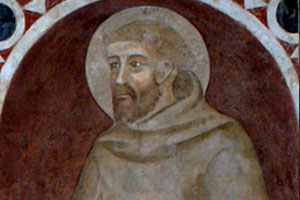The Basilica of St Francis
The Habit
The habit worn by all the mendicant friars, whose model derives from the monastic one, had to be made with raw materials which had not been processed, dyed or trimmed in any way as a sign of poverty. For the same reason even underwear was made of coarse fabric, and the friars were allowed to wear raw hide sandals when outside the convent and felt slippers while when they were in their cells; most of the time however they were barefoot. As a sign of humility, in many cases tonsure – or the shaving of the crown of the head - was compulsory and beards were forbidden as they were seen as a symbol of nobility.
In general, the friars clothing consisted of: - A tunic with long sleeves reaching the ankles; - A hood, usually long and pointed, that covered the head and shoulders; - A scapular, i.e. a strip of material that hangs down the front and back of the tunic with an opening in the middle for the head, that had to be worn both day and night;
- A cowl, a sort of cloak that covered the entire clothing, which opened at the front revealing the colour and the shape of the scapular, which were the distinctive marks of the Order.
The friars’ clothes were the outer sign of their consecration to God and, therefore, had to be worn at all times, even at night. The clothes were almost “sacred” and from the tenth century a strong devotion to religious attire spread: it was . . .



